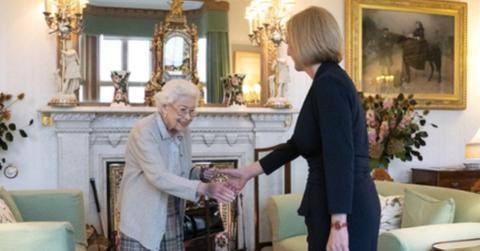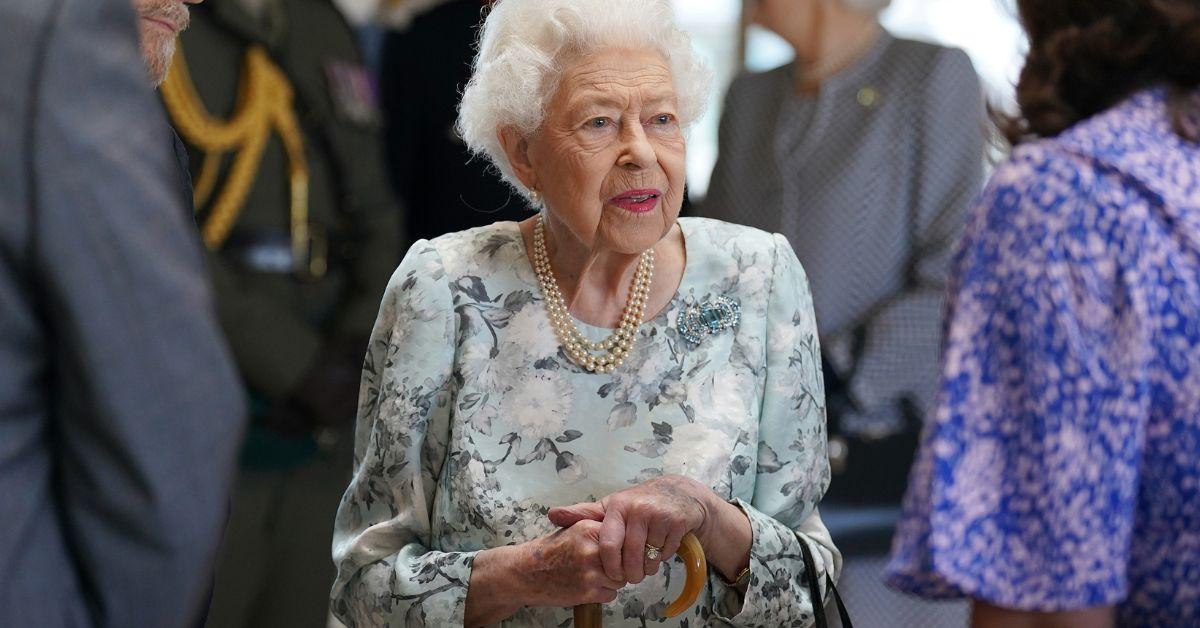Leukemia Fears For Queen, 96, As Top Doctor Claims ‘Bruised Hands’ Could Be Dire Sign Of Cancer

Sept. 7 2022, Published 7:30 a.m. ET
Mysterious under-skin hemorrhaging on Her Majesty’s hands have heightened doctors’ fears she is facing a deadly diagnosis, RadarOnline.com has learned.
Queen Elizabeth shocked viewers in a photo released by the palace on Tuesday showing her shaking her bruised and blue hands with Britain’s new Prime Minister, Liz Truss.

Eagle-eyed royal watchers took to social media to question the cause of what appears to be a worrying health condition for the ailing monarch.
While the Queen’s press secretary has not commented on her bruised hands, top doctors have raised the alarm on the real reason for the monarch’s supposed health concerns.
Twice during a span of three years, one tabloid, The National Enquirer, claimed the hemorrhages are a chilling clue that the 96-year-old is battling cancer and on the brink of death.
Longevity expert Dr. Gabriel Mirkin, a graduate of Harvard University and Baylor University College of Medicine, said bruising was a troubling sign.
“In an elderly woman like her, bruising that’s not the result of trauma points to the loss of clotting component and indicates a blood cancer, like leukemia or lymphoma,” he told the magazine.

With leukemia, the body produces large amounts of abnormal white blood cells — which fail to protect the body against infection.
“Leukemia kills because it leaves you defenseless against germs and cancer cells,” added Dr. Mirkin, who has not treated Her Majesty.
“It also causes your body to produce fewer red blood cells, which carry oxygen to the heart and brain — leaving you anemic. This can also cause clotting and heart failure.”
Treatment typically involves some combination of chemotherapy and radiation, along with targeted therapy.
Concern was first raised when the Queen hosted the Chief of the Defense Staff, General Sir Nick Carter at Windsor Castle in November last year, where she sported the strange hue.

Physician Dr. Jay Verma, from the Shakespeare Medical Centre, was quoted in Metro suggesting the Queen could be suffering from either “really cold hands” or Raynaud’s phenomenon.
“The purple is due to deoxygenated blood,” he said.
According to John Hopkins Medicine, Raynaud’s phenomenon causes decreased blood flow to the fingers in response to cold or stress.
The Queen has been forced to withdraw from several planned appearances in recent months due to “discomfort.”
In October of last year, she was spotted using a walking stick for the first time in 17 years.

In May, a Buckingham Palace statement revealed that the queen would “reluctantly” miss a royal engagement due to “mobility problems.”
The decision was made in “consultation with her doctors,” the palace said.
As RadarOnline.com previously reported, Britain’s Cabinet Office is prepared for Operation London Bridge — the codename given in the event of her death — and Operation Spring Tide, similarly named indicating Prince Charles' accession to the throne.
Documents obtained by Politico show the intense level and specific types of actions required by all arms of the British state, including a massive security operation to manage travel chaos and large crowds.
They also state that the prime minister and her or his cabinet will meet the Queen's coffin at St. Pancras station and that he who will become King, Charles, will begin his tour of the United Kingdom in the days leading up to his mother's funeral.


In the hours after her death, a “call cascade” will ensue.
It will begin with the prime minister, followed by the cabinet secretary, Britain's highest-ranking civil servant, and then the most senior ministers and officials.
The monarch will be buried exactly 10 days after her death.
Powered by RedCircle


